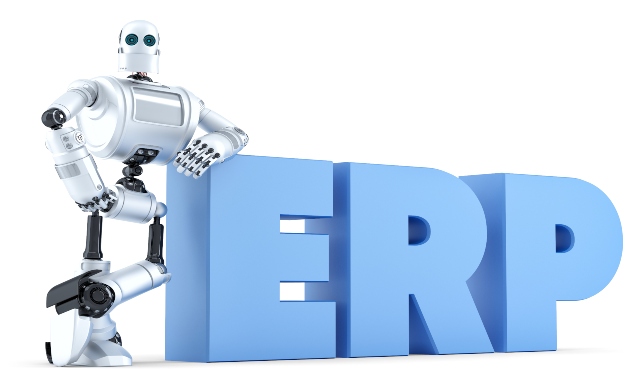SAP Details End of Maintenance Plans for Business Suite
Maintenance Ends in 2025 For Versions Prior to SAP ERP 6.0 EHP6
Meet the Experts
Key Takeaways
⇨ SAP announced the SAP Customer Evolution Kit to provide a streamlined path to defining the value of SAP S/4HANA
⇨ Mainstream maintenance for versions prior to SAP ERP 6.0 EHP6 concludes on December 31, 2025
⇨ Extended maintenance and customer-specific maintenance are still available for SAP ERP 6.0 EHP 6, 7, and 8
In February 2020, SAP announced the extension of mainstream maintenance for core Business Suite applications until the end of 2027. Prior to the announcement a significant proportion of SAP’s customer base had been pushing for an extension as there were just five years until the original end of maintenance date was reached. But, despite the maintenance extension, a significant proportion of SAP’s enterprise ERP customers still have not licensed or implemented SAP S/4AHANA.
To aid customers looking to learn more about SAP S/4HANA SAP introduced the SAP Customer Evolution Kit at Sapphire 2023. The goal of the offering is to provide a streamlined path to defining the value of SAP S/4HANA in terms of understanding capabilities, the transition path, and the product road map.
In conjunction with this announcement SAP provided more details around end of maintenance scenarios for core applications of SAP Business Suite 7. Previously, most customers assumed that mainstream maintenance for their existing SAP Business Suite or SAP ECC solutions would expire at the end of 2027. SAP has clarified that the 2027 date is only valid for the last three enhancement package releases. This includes enhancement packages 6, 7, and 8 (EHP). Mainstream maintenance for SAP ERP 6.0 without an enhancement package, as well as SAP ERP 6.0 with enhancement packages 1 to 5, concludes on December 31, 2025. This information is not new, but had not previously been as clearly stated as is now the case.
Explore related questions
The option still exists for customers running the supported enhancement packages to extend maintenance until December 31, 2030 for additional fee of 2% on the maintenance base for all supported offerings. SAP will also offer customer specific maintenance on solutions after the end of 2030, although this cost must be negotiated separately. Complete details on maintenance timelines and how to check release and enhancement package level are available in this blog post.
Maintenance Options
Many may still be wondering what is covered under mainstream maintenance, the standard level of support for SAP solutions. Mainstream maintenance includes legal changes, regular support packages, problem resolution, the global support backbone where organizations can contact global support for assistance with questions or issues they encounter, mission critical support, as well as specific service level agreements.
Extended maintenance offers a similar scope of support to mainstream maintenance, but there are differences. For example, SAP states that technical limitations or restrictions might limit the delivery of maintenance and support. There is also an additional 2% fee on top of the standard maintenance base for all support offerings. While extended maintenance is available for SAP Business Suite 7 core applications and related product add-ons from 2028 to 2030, SAP may not offer this type of maintenance on every product. However, it offers extended maintenance for selected SAP S/4HANA releases.
The third maintenance option is that of customer-specific maintenance, something that organizations will automatically enter at the conclusion of either mainstream maintenance or extended maintenance if they elected to use that option. During customer-specific maintenance the customer continues to pay the annual support fee for the support option they have, for example SAP Enterprise Support. However, SAP does include specific limitations in what this support will cover. There is no delivery of legal changes and there will be no new support packages. There is also no guarantee of technology updates, for example support of a new database or operating system version. New interfaces will not be supported and problem resolution will be provided for known problems only. There also may be a fee for the resolution of new problems. Unlike mainstream maintenance or extended maintenance, customer-specific maintenance does not currently have an end date.
More detail on the different maintenance phases is available here: SAP Maintenance Phases
What Does This Mean for SAPinsiders?
As of June 2023, fewer than half of the organizations running SAP Business Suite core applications have licensed SAP S/4HANA with an even smaller number completing a deployment. This means thousands of organizations will likely be impacted by the upcoming end of maintenance deadlines for their version of SAP ERP. With the current adoption rate of SAP S/4HANA being largely linear, many organizations must decide between extended maintenance or customer-specific maintenance. How should organizations plan for these scenarios?
- Check the version of SAP ERP that is currently in use and understand what that means from an end of maintenance perspective. It is critical that each SAP ERP instance be checked to verify version and enhancement package number. While most administrators may have that information available, it is vital that every instance be verified. Only by doing this is it possible to be certain about end of maintenance dates. The last thing any organization wants is to find is maintenance ends sooner than expected.
- Clearly define your timeline and plans for SAP ERP decisions. Even if an organization is not planning to move to SAP S/4HANA, it is crucial that this decision be made explicitly because of the potential cost and level of support available. Failing to make a specific decision may work in the short term but could have a detrimental impact in the future. Budgets will need to be determined and plans made for when maintenance ends. If an organization is running a version of SAP ERP 6.0 prior to enhancement package 6, that date is now just two and a half years away.
- Understand what levels of support will be available in the future. It is vital that time be spent educating decision makers and business users on the differences between mainstream maintenance, extended maintenance, and customer-specific maintenance. Since an ERP system is typically central to the day-to-day operations of a company, both users and decision makers must fully understand the impact of any decision to not move to SAP S/4HANA will be.








